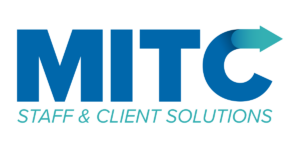Integration with Pay On Demand Platforms
Agency Workforce Management integrates with multiple pay on demand platforms such as Pay On Demand, Square Wallet, Dayforce On Demand, and more to help providers compete in hiring and retention.
Bi-weekly and semi-monthly payroll cycles may be on the way out. To better compete with other industries in the hiring war, agencies are using time and attendance to make a portion of their pay available to employees on a daily basis.
Pay on demand providers let your employees control when they get paid. Agencies can empower employees to meet financial goals and pay bills on time. Employees who reach financial security stay longer, reducing turnover and costs.
- No employer fees
- No more funding or managing advances
- Instantly boost job satisfaction and employee retention
- Help your agency stand-out in the crowd
- Stop employees moving to other employers who don’t offer this benefit
- Improve time and attendance compliance
How Time and Attendance Integrates with Pay On Demand Providers
- Each agency can create it’s own rules as to which employees are eligible, how much they are eligible for, etc.
- As soon as an employee completes a shift, Agency Workforce Management transmits the hours worked, and base pay, to the Pay On Demand provider.
- Clock-outs are captured in real time from biometrics, telephone, and internet enabled devices like smart phones, PC’s, and tablets.
- Employees who sign up with the pay on demand provider can access their payroll at anytime.
- There is a fee for the employee to get paid the next day; same day is usually higher. Fees vary by pay on demand provider.
- At the end of the pay period, MITC Time and Attendance integrates with your payroll sending the full payroll including adjustments, pay differentials, holiday pay, PTO, and overtime.
- The pay on demand provider deposits the remaining balance with the employee.
- Your payroll software/service does not need to change unless it does not support pay on demand. All major payroll providers offer integration. Tax filing, W2 procedures, 401K, and HSA filing all remain the same.
Pay on demand providers fund the advances. The employer runs and remits payroll as it normally does. Employees receive 100% of payroll on payday or earlier. The pay on demand provider gets paid back through the normal payroll process for any early transfers made.
Louisville, Kentucky based BrightSpring, which was formerly known as Rescare, is one of the largest providers of home and community-based health services in the United States. Its home care services line employs about 20,000 caregivers. BrightSpring started offering pay on demand recently.
“Traditionally, we’ve paid people in a semi-monthly cycle, and that’s the way we’ve always done it,” Rexanne Domico, president of home health care services and neuro rehabilitation at BrightSpring, told Home Health Care News. “The idea really came up when we started talking about how do we pay more frequently? How can we crack that code?”
“The problem sometimes for this workforce is the ability to access pay when they need it,” she said.
With one in four caregivers living below the poverty line, lack of cash could discourage prospective caregivers and force them into different, more cash-rich, lucrative lines of work. For example, candidates could receive immediate money waiting tables or earn higher wages working for Amazon.
“We fully believe that the companies that are able to attract and retain caregivers are the companies that are going to see the growth in the coming months and years in the space,” Domico said. “The ability to solve [for pay challenges] for this workforce is a huge answer to this problem.”
BrightSpring began exploring its Pay On Demand initiative about a year ago. The program, which is called “Pay Out,” went live at the end of 2018. It allows employees across the organization — not just caregivers — to access pay as it’s earned.
Already, about 9,000 employees are using Pay Out, Domico said, and the program is achieving what it’s meant to: attracting employees and improving retention.
“We are seeing a lot of interest when we’re talking with our applicants about Pay Out,” Domico said. “We see caregivers saying they’re picking up additional hours because they can get paid for those hours quicker than working somewhere else. We also see some early impact on retention with the people who are engaging in Pay On Demand.”

